All of my obsessions crammed into one blog. Also I will gif anything that catches my attention.
Don't wanna be here? Send us removal request.
Text



"I'm sorry." Clair Obscur: Expedition 33 (2025)
#clair obscur: expedition 33#expedition 33 spoilers#clair obscur expedition 33#this game is soooo good#maelle#verso
2K notes
·
View notes
Text

Gideon protects!
2K notes
·
View notes
Text
Weird when you first start paying attention to animal noises and realize they don't actually sound like the words we use
30K notes
·
View notes
Text

Aqours forever
4 notes
·
View notes
Text

Went to the Aqours display at Shinjuku station, and I’ll be at a live viewing for their final live today and tomorrow.
2 notes
·
View notes
Text

robin refuses to elaborate after this
364 notes
·
View notes
Text

The survey that has been circulating is indeed legit. So, go fill it out asap!
Survey here
423 notes
·
View notes
Text

SCREENSHOT OF ALL TIME I WILL CLUTCH TO THIS LIKE A SECURITY BLANKET
17K notes
·
View notes
Text
The other night husband and I were watching a documentary about the yeti where they were doing DNA analysis of samples of supposed yeti fur, and every one of them came back as bears.
Anyway, the next night we watched a thing about some pig man who is supposed to live in Vermont. People said it had claws and a pig nose but walked upright like a man. Now, I happen to know that sideshows used to shave bears and present them as pig men. So every piece of evidence they gave of this monster sounds to me like a bear with mange.
So now the running joke in our house is that everything is bears. Aliens? Bears. Loch Ness monster? Bear. Every cryptozoological mystery is just a very crafty bear.
Bears. They’re everywhere. Be wary. Anyone or anything could be a bear.
539K notes
·
View notes
Text
the insane experience of missing a fictional character . like you can always go back and reread the book , replay the game , rewatch the show or movie , you can always go back & see them , but you can never experience them & their story for the first time again . its absurd to miss them because they'll always be there , but you'll miss when there were still new things for them to say .
for a small time they were real & growing and changing and you hung onto every new word, but now all they can do is repeat the same story forever&ever & they're not real anymore because you know everything they're going to do. & you miss them. its fucked man...
35K notes
·
View notes
Text
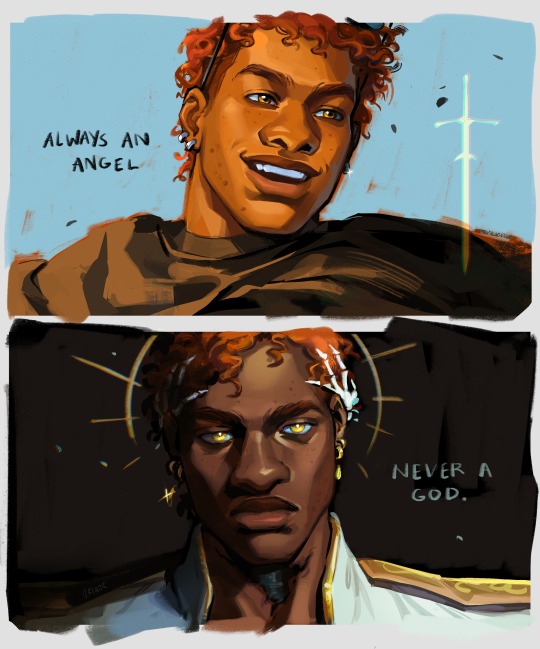
i miss her like a mf...🚬
#gideon the ninth#spoilers#gideon the ninth spoilers#gideon nav#nona the ninth spoilers#please don't vanish again gideon#harrow couldn't take it#and neither could i lmao
6K notes
·
View notes
Text
Finished Nona the Ninth today, I read all three books in the series over the last couple weeks.
I just want to read them again
#flipomatic rambling#gideon the ninth#these books#are so enjoyable#i am the target demographic for them#queer#millenial#has read homestuck#and they tick all of the boxes#that i was hoping for#i highly recommend them#don't read any spoilers#just go read gideon
9 notes
·
View notes
Text




Harrow The Ninth y'all (Design practice)
811 notes
·
View notes
Text
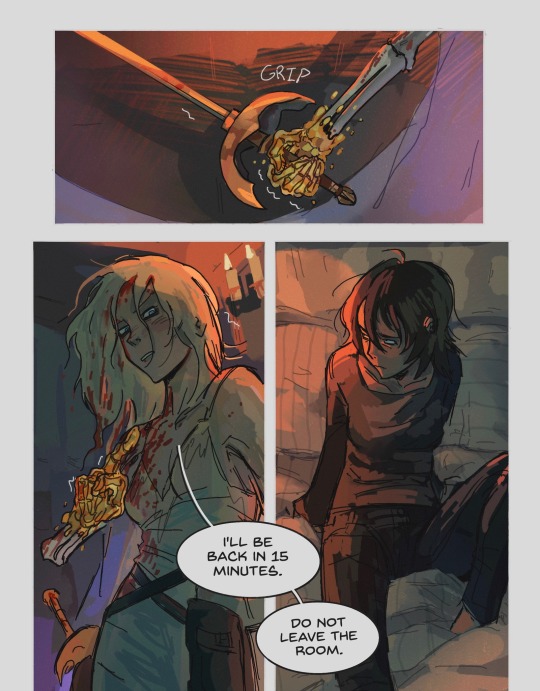



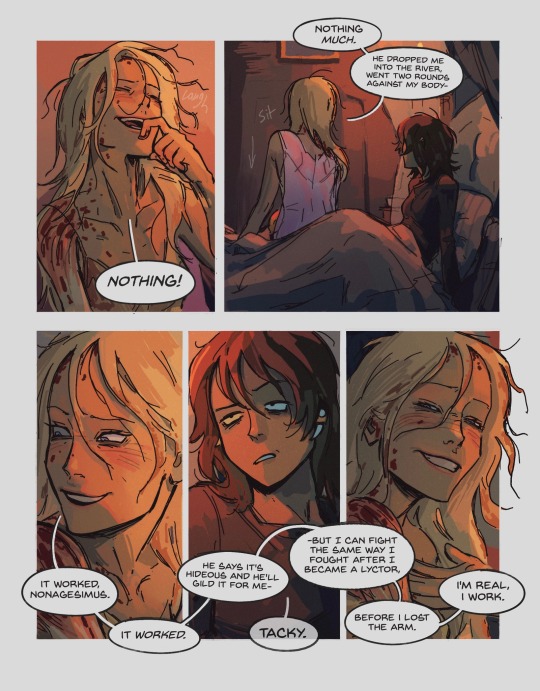
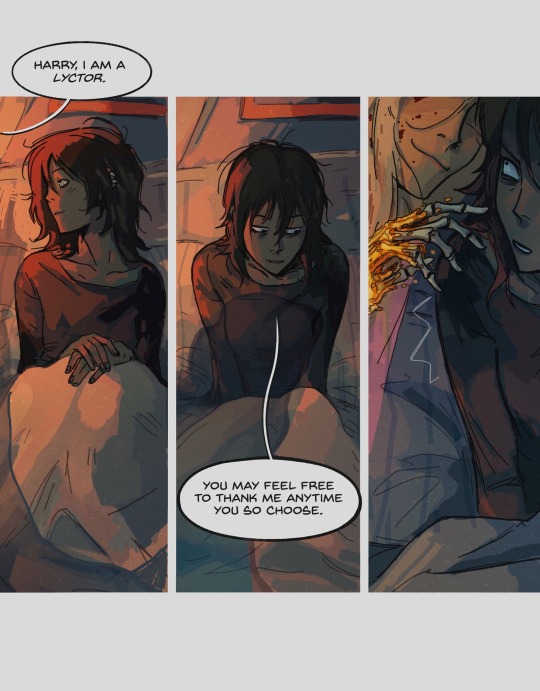
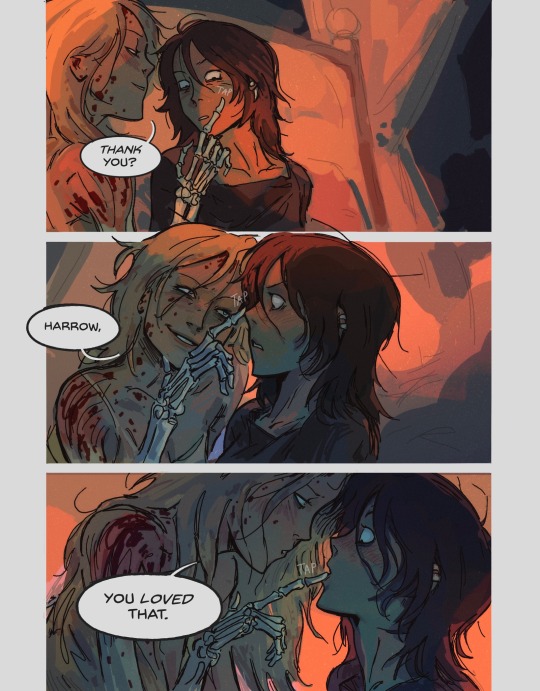

another tlt comic, ianthe's new arm.
(guys this took me 60 plus hours... please say something nice to me..)
#damn this is good#gideon the ninth#spoilers#harrow the ninth spoilers#harrowhark nonagesimus#ianthe tridentarius
17K notes
·
View notes
Text


they make me so unwell‼️
6K notes
·
View notes
Text
The Queer Reflection of Heterosexuality in Gideon the Ninth
For the full essay, click here.
In the twenty-first century, it is common for young adult novels to involve some aspect of feminist views or queer perspectives as a reflection of the growing acceptance of diversity in the world; Gideon the Ninth by Tamsyn Muir is one such novel. On the surface, Gideon the Ninth is a fantasy/sci-fi lesbian romantic tragedy, involving popular tropes of the day such as enemies-to-lovers and fake-dating. In short, on paper it’s a novel that, while heart wrenching and well written, is ultimately just another cash grab. When delving deeper, however, themes and reflections of our own world become clearer. By applying Judith Butler’s essay “Imitation and Gender Insubordination” on what truly makes a heterosexual relationship normative vs the ‘otherness’ of queer love, we begin to see a more complicated narrative emerging in Muir’s work; besides which, Helene Cixous’s “The Laugh of the Medusa” calls us to examine works written by female authors as reflections of their own histories and social experiences. This opens the gateway for us to reflect upon why Muir chose to write Gideon the Ninth the way she did–namely, why a central part of the world she has built revolves around a necromancer/cavalier pairing in which all main characters take part in, to some fashion or another. This central dynamic, when examined under Adrienne Rich’s “Compulsory Heterosexuality and Lesbian Experience” is revealed to be a reflection of how we see heteronormativity and a commentary on the faults involved with the ‘traditional’ view of relationships. Thus, Tamsyn Muir has pulled on her own history to create the necromancer/cavalier dynamic, which makes a commentary on heterosexual norms while exemplifying queer lesbianism and how there is no set gender dynamic, but rather only an imitation of what is viewed as the cultural preference.
To truly establish the examination of this book, one first must understand what happens in it. This is not as easy as it sounds; Muir famously writes each book of the Locked Tomb Trilogy with a different unreliable narrator each time and Gideon, the close-third person narrator of the first book, is no different. The reader discovers early on what appears to be Gideon’s central personality–she’s a butch lesbian with a quick wit who was raised in the necromantic space version of a convent. She wants to leave and join the Cohort–the main military force of the Empire of the Nine Houses–and absolutely hates Harrowhark. Gideon is humourous and crass, with a buried sense of romanticism and a deep seated loneliness that works as her main motivation throughout the book. Every other character we meet is through her eyes and thus we only get a biased view of them; if Gideon thinks a person is good, the narrative treats them as such, regardless of reality. However, Muir masterfully leaves enough truths held within the narrative to discover what’s actually happening, regardless of the fact that Gideon would much rather flirt with a middle-aged dying woman than worry about the multiple murders that occur through the book. This is most obvious with Harrowhark.
Harrowhark is the necromantic heir and acting leader of the Ninth House, where she and Gideon grew up together as the only children of their generation. She’s introduced as cold, calculating, smug, and cruel, having been stated to have tried to kill Gideon on multiple occasions. Through the book, as Gideon’s perspective changes, we learn she is also deeply guilt ridden, lonely, and trying to save her people from absolute destruction (she also had nothing to do with the attempts on Gideon’s life). Her motivation centers around the desire to gain new blood in the Ninth House, as there are no more children being born from lack of young adults. This is the backdrop on which the inciting incident begins.
In the beginning, we learn that the Emperor Undying–who is thought not only as the leader of the Empire, but also as God himself–has called all necromantic heirs of the Nine Houses and their cavaliers to come to the First House and train to reach Lyctorhood (a state of perfect necromantic ability that gifts not only unimaginable power but also immortality.) To be a Lyctor is to be God’s hand and will. Once there were eight, but only four remain alive and he wishes to refill their ranks. Harrowhark sees this as her opportunity–if she can become a Lyctor, she could ask God to repopulate the Ninth House and all her problems would be solved. The only problem being she has no cavalier and so blackmails Gideon into pretending to be one.
The First House thus becomes the battlefield for eight heirs (as the First House has no members but God and his Lyctors) trying to reach Lyctorhood before the rest. Through the book, Muir explores all eight of the relationships that these cavaliers and necromancers have built together, each one creating a different sort of commentary on queerness and what it means to form a dynamic based around cultural expectations. Most of these, as one could guess, are deeply strange.
The necromancer/cavalier dynamic is so deeply ingrained into the Empire’s cultural ideology, that it is expected that every necromancer of any standing be paired with a non-necromancer fighter. The only reason Harrowhark does not have one is because there is literally no one in the Ninth that qualifies besides Gideon–every other person within thirty years of her age is dead, besides one boy named Ortus who was nominally her cavalier before he ran away in the first three chapters. This assumption of cavaliership is reflective of our own society’s involvement with heterosexual relationships–if you’re not married to someone of the opposite gender by thirty, people start judging. As discussed in “Imitation and Gender Insubordination”, hetero relationships are always viewed as the cultural expectation that everyone attempts to imitate, but largely falls short on as there is no actual perfect relationship that people can achieve; just the belief that it is there pushes people to reach for it (Butler). Muir’s views on this are most easily seen when one examines the necromantic/cavalier pairings of the Third, Seventh, Eighth, and Ninth Houses.
#very interesting analysis#gideon the ninth#gideon the ninth spoilers#spoilers#for the first book#wondering if you have read the second book#I don't want to spoil you if you haven't#I would be interested in scrutinizing the pair from the second house under this lens#during the first book#and again in the short story extension to the second#the way Judith views the relationship between necromancer and cav#aligns well with this analysis
21 notes
·
View notes